Sealife guideThe great white sharkCarcharodon carcharias
Last updated on 03/07/2025 at 11:54 PM
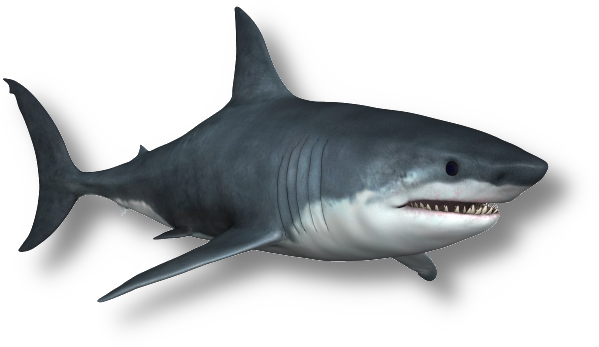
The great white shark (Carcharodon carcharias)
Taxonomy
- Common name: Great white shark
- French name: Grand requin blanc
- Spanish name: Tiburón blanco
- Scientific name: Carcharodon carcharias (Linnaeus, 1758)
- Family name: Lamnidae
- Order name: Lamniformes
- Class name: Elasmobranchii
Description
The great white shark is one of the oceans' greatest predators ! The great white shark's body is bulging in the middle and tapered at the ends, giving it exceptional power for sudden attacks.
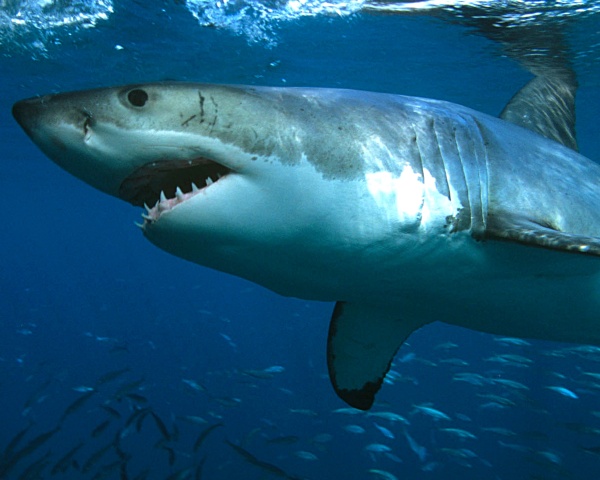
The great white shark has several rows of razor-sharp teeth
The great white shark is one of the fastest and most enduring of all sharks, even in the coldest waters, thanks to its circulatory system, which keeps its body temperature warmer than the temperature of the water in which it swims.
The great white shark has several rows of razor-sharp teeth. When a tooth breaks off, it is immediately replaced by a new tooth from the row behind. The great white shark averages 3 to 5 meters in length, but can reach a maximum of 7 meters.
Geographic range
The great white shark is found in all the world's oceans except the polar oceans.
Habitat
The great white shark is found from the surface to a depth of 1 300 meters, but is particularly fond of shallow areas along the coast.
The great white shark is a solitary shark, but it is sometimes possible to encounter it in couples.
Diet
The great white shark feeds on small fish, tuna, marine mammals such as dolphins and sea lions, sea turtles and sea birds. The great white shark is so powerful and fast that it will sometimes leap out of the water to catch its prey.
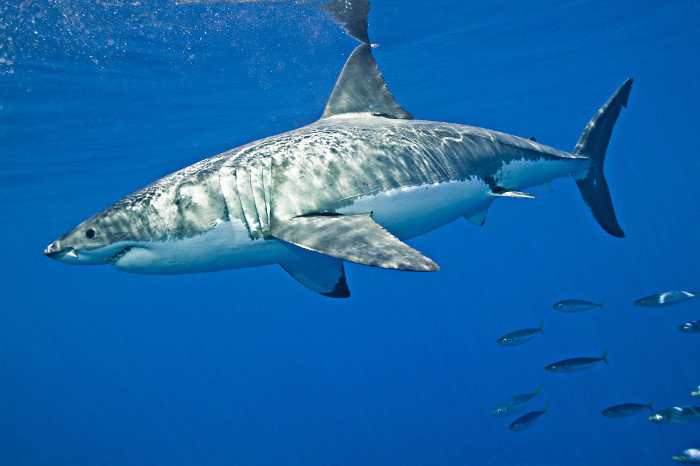
The great white shark is a solitary shark, but it is sometimes possible to encounter it in couples
Reproduction
Great white shark reproduction is still poorly understood. The great white shark is ovoviviparous.
Did you know ?
The great white shark can weigh over 3.5 tons !
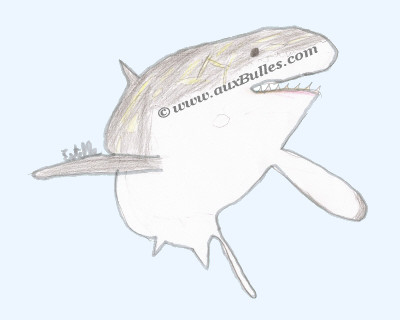
The great white shark drawn by Estelle
Beware ! Seen from the surface, the great white shark's back can blend in with the seabed !
The great white shark has exceptional hearing: it can hear one of its prey from over 900 meters away.
Despite its high position in the food chain, the great white shark is on the endangered species list.
The great white shark is listed as many other marine species within The IUCN Red List of threatened species. The great white shark appears in the IUCN Red List since 2022 within the category Vulnerable !
Within the same family
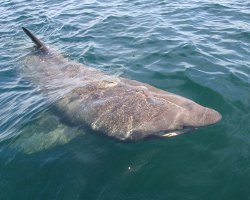
Basking Shark
(Cetorhinus maximus)
(Cetorhinus maximus)
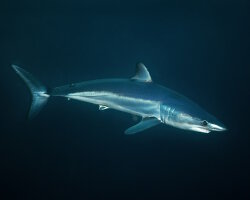
Longfin mako
(Isurus paucus)
(Isurus paucus)
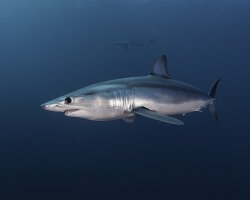
Short fin mako
(Isurus oxyrinchus)
(Isurus oxyrinchus)
Discover also
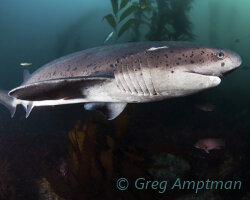
Broadnose sevengill shark
(Notorynchus cepedianus)
(Notorynchus cepedianus)
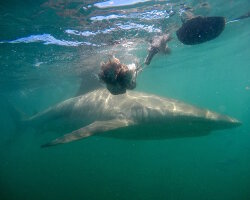
Copper shark
(Carcharhinus brachyurus)
(Carcharhinus brachyurus)
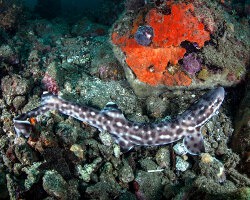
Coral catshark
(Atelomycterus marmoratus)
(Atelomycterus marmoratus)
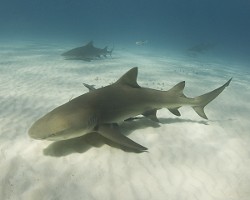
Lemon shark
(Negaprion brevirostris)
(Negaprion brevirostris)
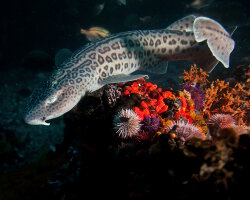
Leopard catshark
(Poroderma pantherinum)
(Poroderma pantherinum)
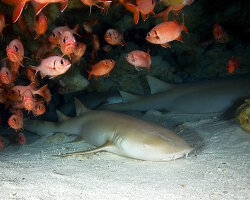
Tawny nurse shark
(Nebrius ferrugineus)
(Nebrius ferrugineus)
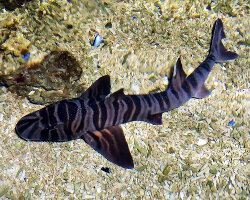
Zebra bullhead shark
(Heterodontus zebra)
(Heterodontus zebra)
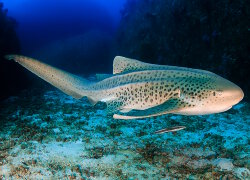
Zebra shark
(Stegostoma fasciatum)
(Stegostoma fasciatum)
Our latestUpdates
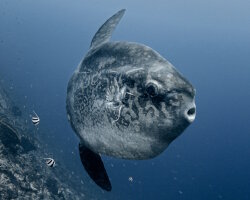
Friday, September 5th 2025
The bump-head sunfish
Learn about the bump-head sunfish (Mola alexandrini), the world's heaviest bony fish, its habitat in tropical and temperate oceans, diet of jellyfish, deep-water behavior and record size over 6,000 lbs.
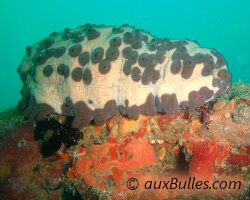
Wednesday, September 3rd 2025
The chocolate chip sea cucumber
The chocolate chip sea cucumber has a massive cylindrical body that is beige in color, covered with a set of dark brown pustules resembling chocolate chips that protrude slightly from the surface, giving it a resemblance to a cookie, hence its french name. It can reach a length of about 12 inches when fully grown.
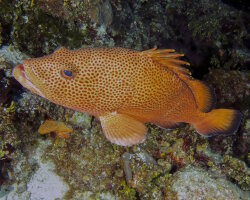
Monday, September 1st 2025
The red hind grouper
The red hind grouper has a distinctive appearance, usually beige to brown in color, with numerous red or brown spots covering its entire body and the base of its fins. It is often found in the shallow waters of coral reefs and rocky areas, where it hides in crevices and cavities.
Photo of the Day
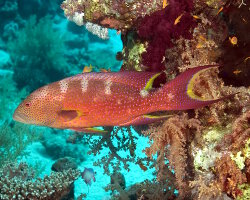
Mérou croissant de lune
(Variola louti)
(Variola louti)
